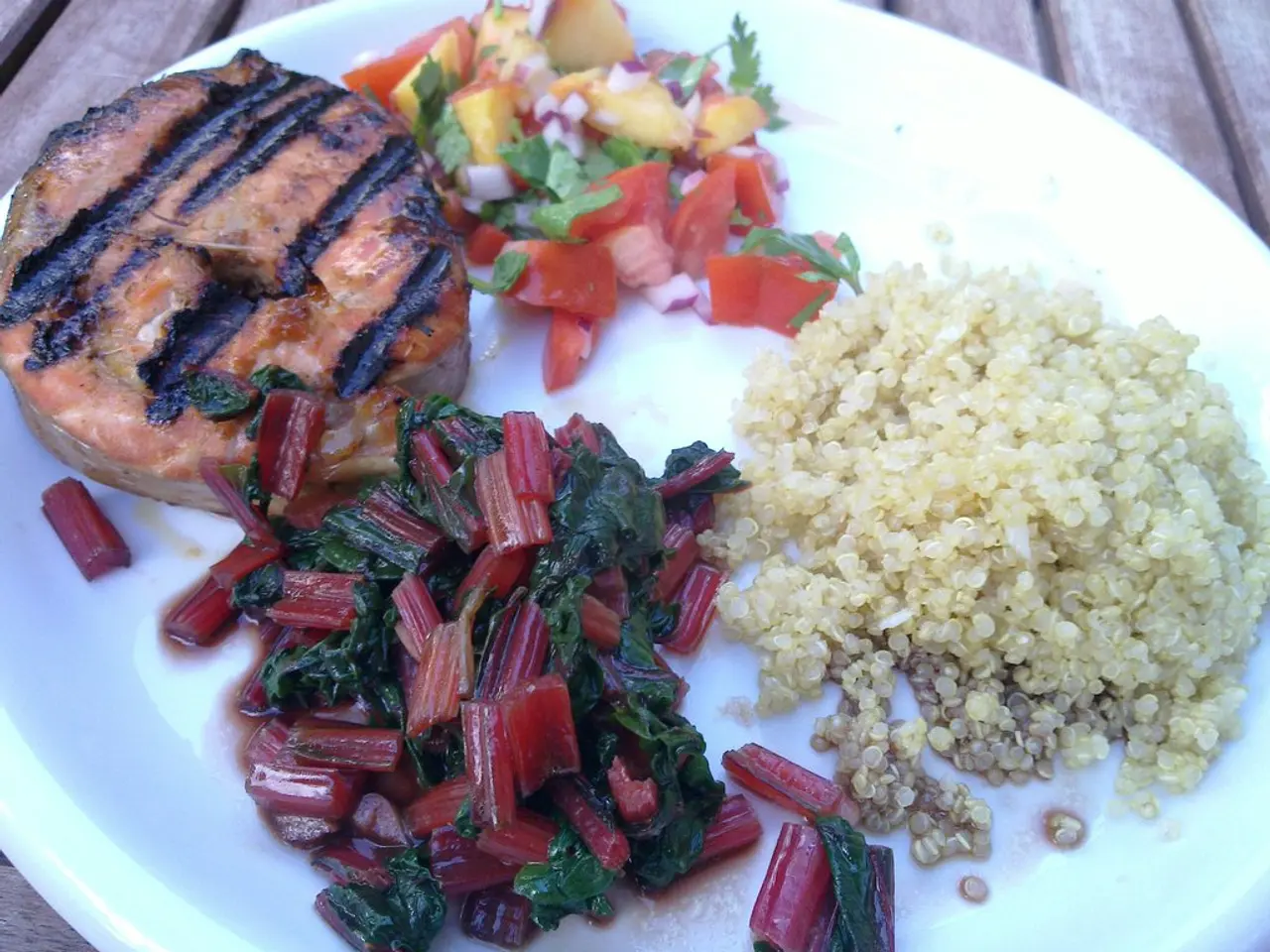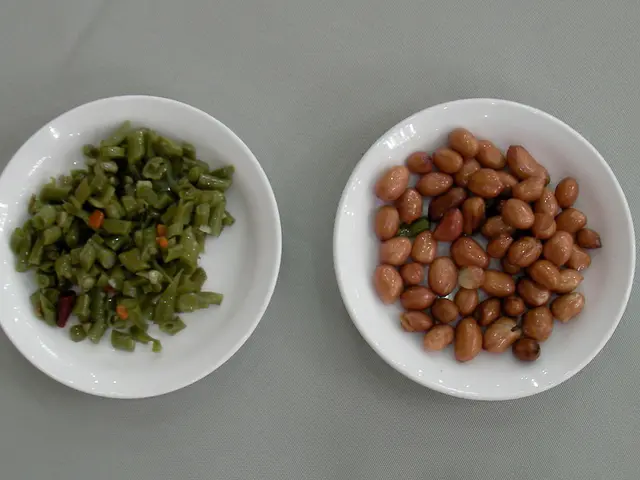Uncooked Produce's Advantages: Why Consuming Fresh Veggies is a Smart Move
Raw vegetables, such as carrots, cucumbers, and bell peppers, are natural produce rich in essential nutrients and enzymes. They play a significant role in disease prevention, contributing to improved eye health, skin health, and heart health.
A diet rich in raw vegetables benefits the environment by reducing the carbon footprint associated with food production and water conservation. However, it's essential to note that relying solely on raw vegetables might result in a lower intake of iron and protein compared to a diet that includes meat or legumes.
To ensure the nutritional value and food safety of raw vegetables during storage, consider the following best practices:
- Store root vegetables like carrots, beets, parsnips, and radishes in damp sand in a cool, dark place to keep them crisp for months.
- Keep leafy greens, such as spinach, kale, and lettuce, wrapped in a paper towel inside a perforated plastic bag to absorb excess moisture and allow airflow, preventing sliminess.
- Remove ties and rubber bands from vegetables, trim leafy ends leaving about an inch for moisture retention, and store them loosely in perforated bags in the refrigerator to improve air circulation.
- Separate fruits and vegetables during storage to avoid ethylene gas from fruits causing premature vegetable spoilage; store vegetables away from strong-smelling foods to avoid odor contamination.
- Store onions and garlic hanging in pantyhose in a cool, dry place to extend their freshness for months.
- Maintain proper humidity and temperature: cool, humid environments (80-95% humidity) are ideal for most vegetables, but specifics depend on vegetable type.
- Handle vegetables gently to avoid bruising, which accelerates spoilage.
- Wash storage containers regularly to prevent bacterial or mold buildup.
For longer-term preservation, safe canning—following reliable instructions to ensure the destruction of bacteria and vacuum sealing—is recommended to maintain food safety and nutrient retention beyond short-term storage.
Additional practical tips include not washing certain produce like strawberries or grapes before storage to prolong freshness and wrapping vegetables like celery in foil to reduce moisture loss.
Following these combined practices helps retain nutritional quality, maintain freshness, and reduce foodborne risks during storage of raw vegetables.
However, a raw food diet may lead to potential nutrient deficiencies, as cooking often enhances the absorption of certain nutrients. To prevent vitamin B12 deficiency, it is advisable to incorporate fortified foods or supplements.
Raw vegetables are high in dietary fibre, vitamins, and minerals, which support healthy digestion and maintain healthy blood pressure levels. Incorporating a variety of raw vegetables enhances nutritional intake and provides a broader range of essential nutrients.
Proper washing and handling techniques, such as thorough washing, using separate cutting boards, and avoiding cross-contamination, are essential for minimising risks. Meeting daily calorie needs on a raw food diet can be challenging due to the lower calorie content of raw vegetables compared to processed or cooked foods.
Proper meal planning is essential to maintain a balanced raw food diet, and it is highly recommended to consult with a healthcare professional before starting a raw food diet. Raw vegetables retain their natural enzymes and antioxidants, which aid in digestion and combat oxidative stress and inflammation.
Incorporating raw vegetables into the diet supports weight management by being low in calories and high in fibre. By following these guidelines, you can make the most of the benefits of raw vegetables while ensuring their freshness and safety.
- Adding plant-based recipes that include raw vegetables into your health-and-wellness lifestyle can provide numerous health benefits, such as boosting nutrition, weight management, improved eye health, skin health, and heart health.
- When planning meals, consider incorporating a variety of recipes that feature raw vegetables to ensure a well-rounded consumption of essential nutrients, including iron and protein, which might be lower with a raw food diet.
- To maintain the nutritional value and freshness of your raw vegetable ingredients, follow safe storage tips such as damp sand for root vegetables, paper towel and perforated bags for leafy greens, and regular washing of containers to prevent bacterial or mold buildup.
- To enhance the absorption of certain nutrients, consider cooking some of your raw vegetables, like for example some B12 important in red blood cell production.
- In addition to proper storage, also pay attention to cleanliness and hygiene while preparing raw vegetables, using separate cutting boards, washing thoroughly, and avoiding cross-contamination to minimize foodborne risks.
- Consider adding healthy drinks, such as fresh fruit juices, smoothies, or plant-based alternatives to your recipes for increased energy and overall well-being.
- Proper meal planning and consultation with a healthcare professional can support a balanced raw food diet, ensuring daily calorie needs are met without compromising nutritional intake.
- By following these cooking, storage, and planning tips, you can make the most of the benefits offered by raw vegetables while maintaining food safety and overall health.







